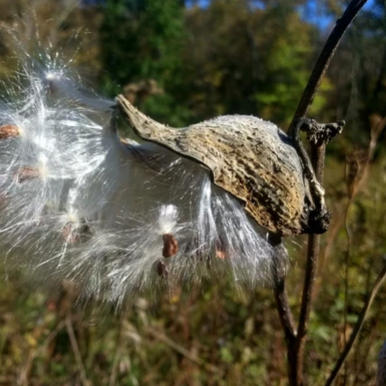
Grow-How: Your October Gardening Checklist
October is the the garden gate of the season. It's the dividing line between one year's bounty and the next. With its arrival comes the end of the planting period for most crops, and the last call for many others. But October also heralds harvests of squash, sunflowers, and fall greens. And it offers us the opportunity both to plant seeds to overwinter and to pamper our growing spaces so our gardens will be better than ever come spring. It's a month of appreciation for what we've worked so hard to achieve over the past growing season, and an investment in the year to come.
SOW WHAT NOW?
 Although the time to sow new seeds for harvest this year has passed, there's still plenty of sowing to be done in anticipation of spring.
Although the time to sow new seeds for harvest this year has passed, there's still plenty of sowing to be done in anticipation of spring.
Winter hardy greens like Mache and Spinach, for example, can still be sown this month and into the winter. They will grow roots with each warm day, thaw in the coldest months, and in early spring, will grow foliage for next season’s first salads.
From October on, you can also sow many types of flowers that need to go through a period of cold-stratification before they will germinate. Poppies, Spider Flower, German Chamomile, Milkweed, and Blazing Star are just a few.
But garlic, shallots, and fall-planted flower bulbs are the main event for October sowing. Garlic needs a weed-free bed with lots of organic matter as well as mulch. Have a look at our recent Garlic Guide for more detailed growing instructions. Shallots are just as easy to grow as garlic and add a unique kick to your cooking.
Fall-planted flower bulbs like Alliums, Crocuses, Daffodils, Irises, Muscari, and Tulips can be sown now for a burst of color come springtime. Bulbs, unlike seeds, like to be placed deep in the ground. Dig a hole that is two or three times deeper than the bulb. Plant it right side up: the round end of the “tear-drop” should be on the bottom, pointy end facing up. Cover it with soil and water in well to help the bulb establish roots. Flowering bulbs look best when grown fairly closely together like a loose bouquet; for a natural look, scatter them about (still mostly following the suggested spacing) instead of planting in straight rows. Keep the planted area weeded to eliminate the competition for water and nutrients. If you find that some bulbs get “un-planted” by hungry critters, consider protecting your bulb bed by laying down a sheet of chicken wire over it, and then remove the wire when the plants emerge in spring. You can sow bulbs any time before the ground freezes (which will be a few weeks after the first frost date).
SEASON EXTENSION
At this time of year, just like in spring, it can be easy to be tricked by the warm days, but nights can quickly dip into low temperatures and the weather can take an unpredictable turn. To keep tender crops producing for a few extra weeks, season extension tools such as cold frames, row cover, and quick wire hoops are very effective. Look back to our Season Extension post for more on row cover use. Wire hoops are simple wire frames that can be inserted into the ground around plants to keep row covers from direct contact with crops, thus adding better heat retention, airflow, and overall plant health. They can also be used in greenhouses and high tunnels, or under taller low hoops that hold plastic, adding 5 degrees to any space.
SOIL CARE
 As patches of bare soil open up in the garden, take time to make sure your soil is healthy, fed, and ready for next season. Now is the time to add balance and add in nutrients, through amendments and cover crops. Before fall plantings, consider an additional application of one inch of compost as well as a repeat of your regular amendment regimen to keep your soil strong. For a cost effective way to build organic matter, fix nitrogen, draw nutrients from the soil, prevent erosion, and break pest and disease cycles - sow cover crops! Leaving your soil bare over the winter can lead to erosion and nutrient loss, but cover crops will leave it better than they found it. Learn which cover crops you can still plant now and basic info about each one in our Fall Cover Crop Planting Chart.
As patches of bare soil open up in the garden, take time to make sure your soil is healthy, fed, and ready for next season. Now is the time to add balance and add in nutrients, through amendments and cover crops. Before fall plantings, consider an additional application of one inch of compost as well as a repeat of your regular amendment regimen to keep your soil strong. For a cost effective way to build organic matter, fix nitrogen, draw nutrients from the soil, prevent erosion, and break pest and disease cycles - sow cover crops! Leaving your soil bare over the winter can lead to erosion and nutrient loss, but cover crops will leave it better than they found it. Learn which cover crops you can still plant now and basic info about each one in our Fall Cover Crop Planting Chart.
The crisp and pleasantly brisk weather make October days ideal for spending outside. Get as much gardening in as you can this month!







